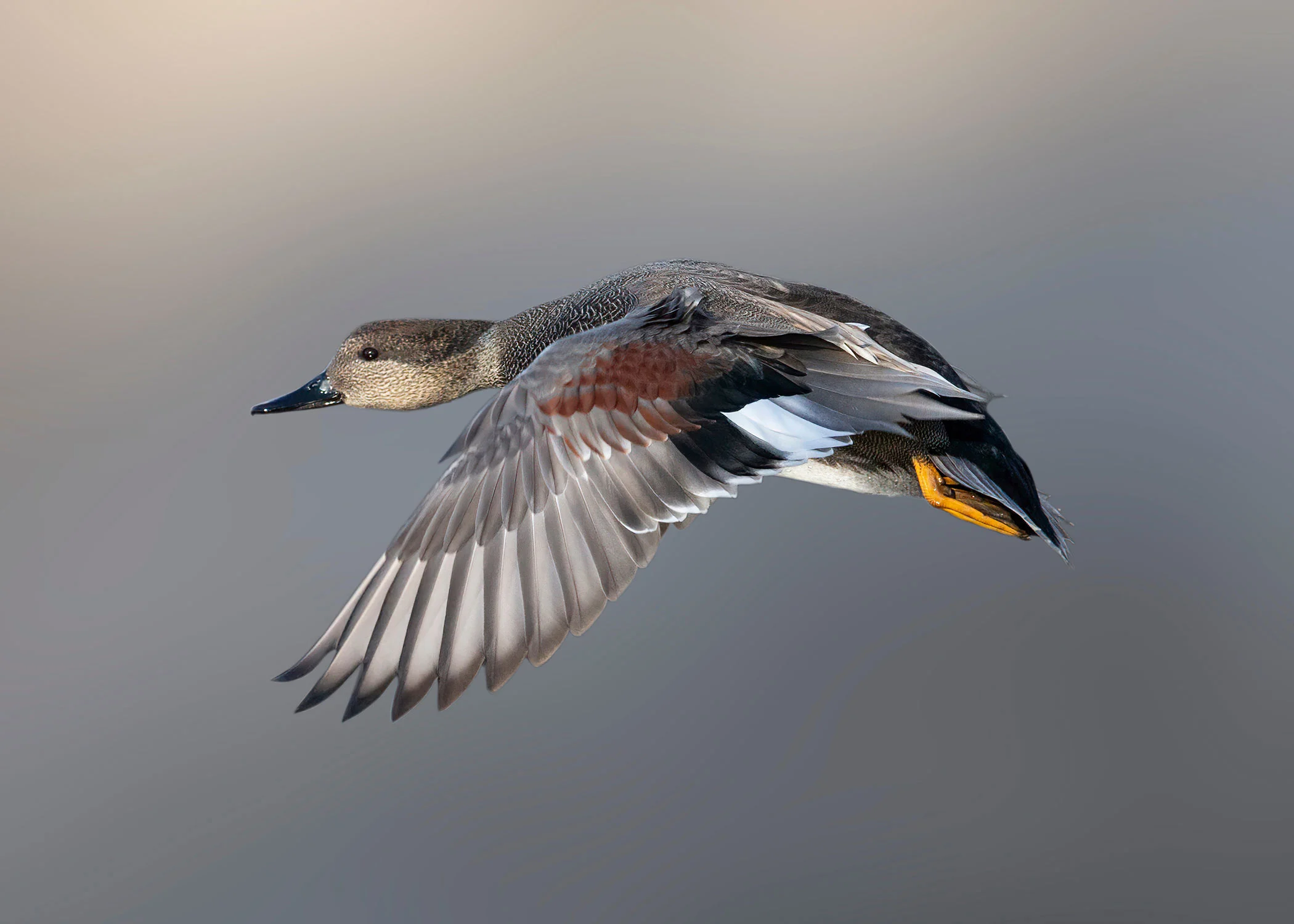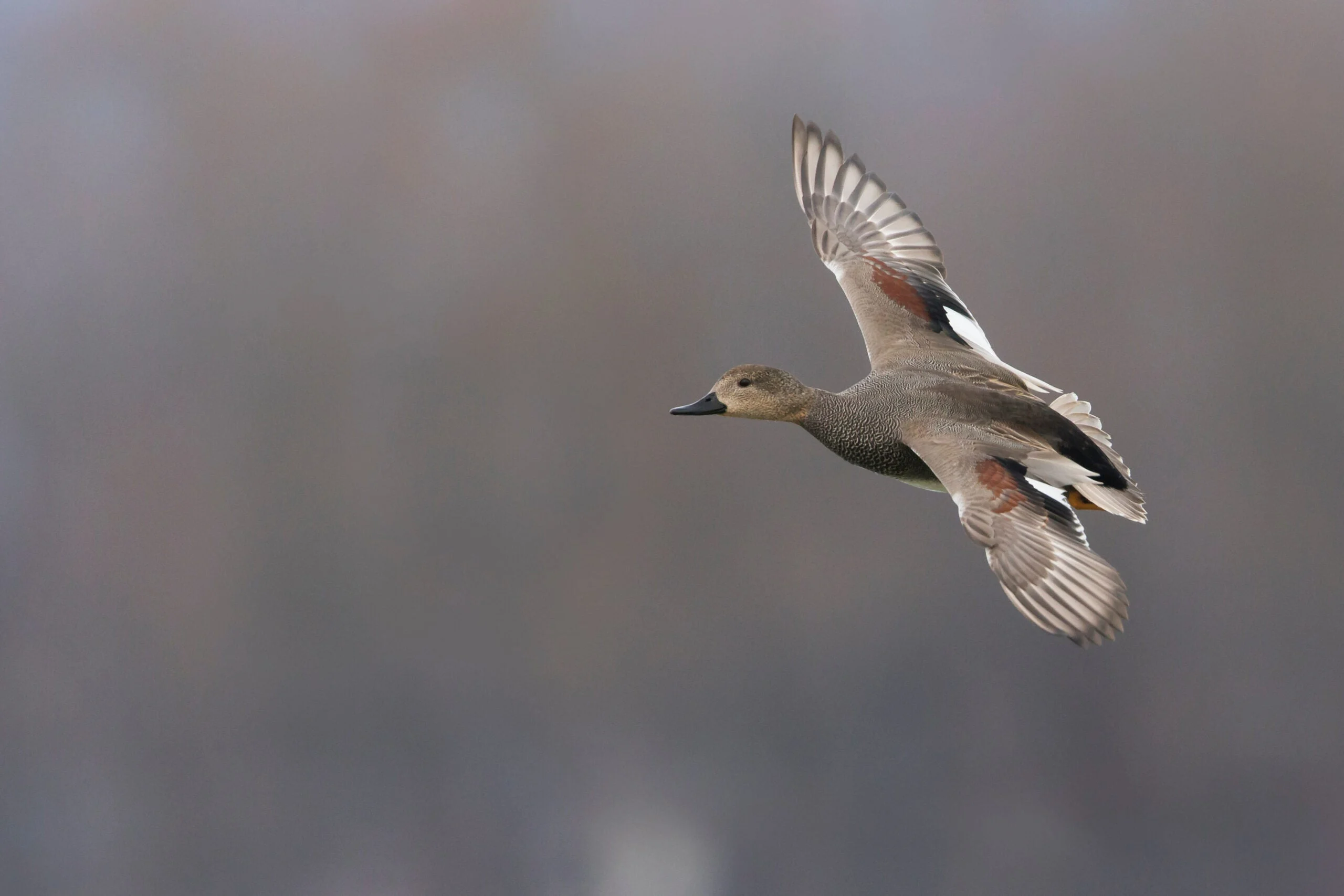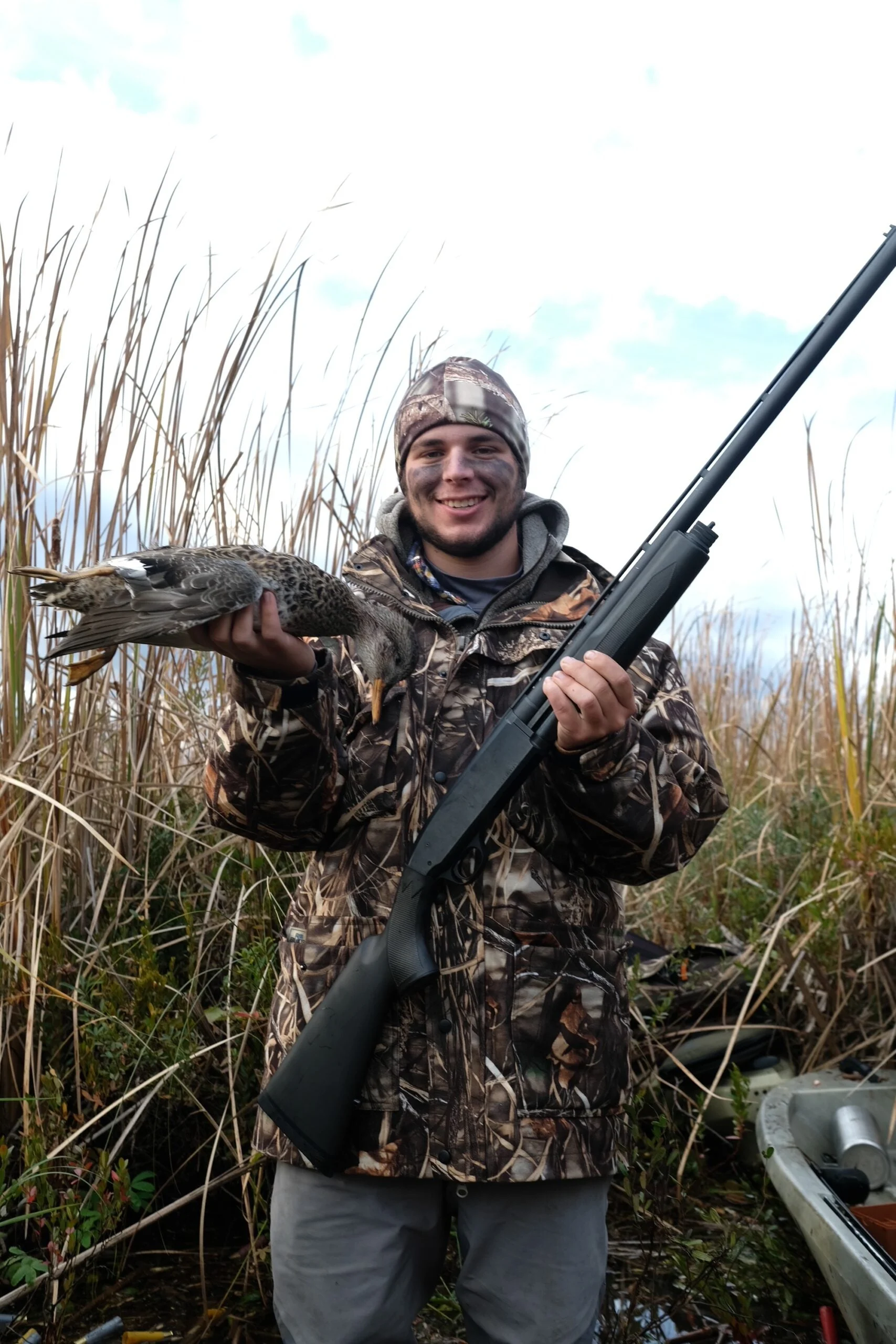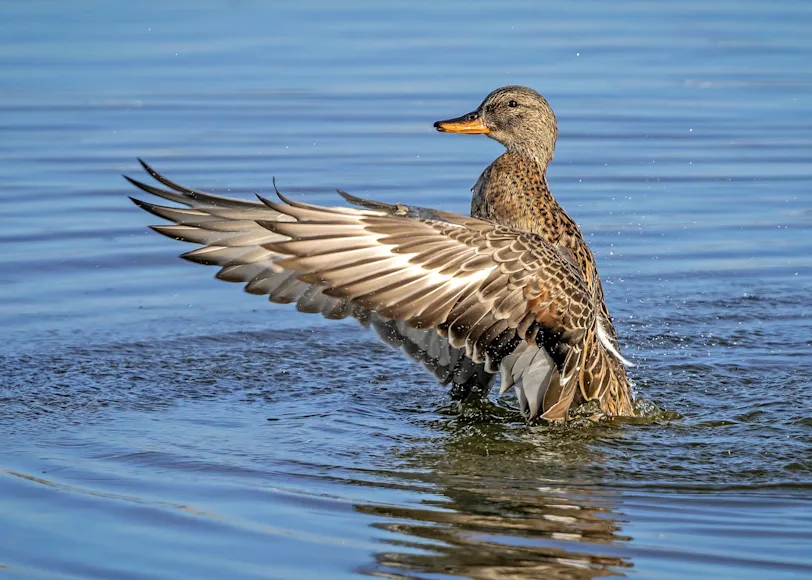If the gadwall were a stand-up comedian, he’d be the late Rodney Dangerfield. Why Dangerfield? Because the comic was always referring to himself as “getting no respect.” And in the waterfowl hunting community, the gadwall certainly doesn’t get the respect that it deserves.
Often seen as merely a bonus duck to those seeking mallards, the gadwall—aka gray duck or squarehead—deserves plenty of respect and admiration. They decoy nicely, offer a challenging shot on the wing, and, though some might argue, every bit as tasty on the table as is a fat ‘ole greenhead or acorn-eating wood duck.
So why no respect? The simple answer is that gadwalls aren’t as flashy as some of the more beloved waterfowl species, hence their nickname, the gray duck. But if you ask me, a stud drake gadwall is hard to beat. Here is everything else you need to know about one of the most widespread waterfowl species across North America—the gadwall duck.
Appearance and Vocalization
If you see a medium to medium-large duck with a white speculum, which is the secondary or bottom wing feathers, it’s a gadwall. The gray duck’s visual claim to fame is it’s the only North American puddle duck with a white speculum. Not to be mistaken with the white coverts or upper wing feathers of the American wigeon.
The hen gadwall is, like many puddler hens, a rather drab mix of brown, buff, and white. It has a yellowish-orange bill with darker spots and a smaller yet still distinct white speculum. The drake is a handsome duck—yellow legs and feet; intricately patterned gray/black chest and sides; brownish speckled head; all-black bill; black rump; and the tell-tale brilliant white secondary feathers.
Gadwalls are just slightly smaller than mallard ducks, averaging from two to two-point-five pounds. When flying and given good lighting, it’s possible to note the gadwall’s thinner neck and more streamlined back-swept wings when compared, again, to the mallard.
Hen gadwalls make a quack similar to that of the mallard hen, but in a higher pitch and with a bit more of a breathy rasp. Drake gadwalls make a very distinctive dink…dink-dink…dink sound that, once heard, becomes immediately recognizable.

Distribution and Population State
Although gadwall are found across the U.S. and in all four flyways, they’re most common in the Central and Mississippi corridors. Gray ducks will winter in the southern U.S., and many migrate as far down as Guatemala, where they serve as a mainstay for Lower 48 waterfowlers enjoying South American hospitality.
The gadwall population has steadily increased since the 1980s. The upsurge, biologists believe, is due to improvements in wetland conditions and adjacent upland nesting habitat throughout the Great Plains and the Prairie Pothole Region. According to Ducks Unlimited, gadwall numbers did fall slightly in 2023 as compared to the previous year. However, the population remains at an astounding 25 percent above the long-term average. Today, gray ducks rank third behind mallards and green-wing teal in terms of harvest.
Habitat
Gadwall can be found in any number of different wetland settings. Here in the Pacific Northwest, where I make my home, I’ve encountered gray ducks, albeit not in large numbers, in seasonal sheet water, brackish tidal marshes, and on the edges of large saltwater bays. Throughout the Central Flyway, gray ducks are regularly taken from stock tanks, ponds, and small lakes, while in Arkansas, hunters working the timber for mallards will often count gadwall among their ‘bonus ducks.’
Categorized as a dabbling duck, gadwalls can typically be found on shallow waters where they ‘tip-up’ in their search for plant material, like duckweed, algae, grasses, and seeds, along with a slight percentage of invertebrates such as dragonfly nymphs, snails, and aquatic insects.

Hunting Methods
It is safe to say that few duck hunters set up specifically with gadwalls in mind; thus, their reputation as ‘bonus ducks.’ Still, that’s not to say they can’t be targeted with intent. If you’re looking to hang half a dozen gray ducks on the strap, here are some helpful hints:
Decoys
You don’t need two dozen gadwall decoys to consistently harvest gray ducks. However, a half a dozen gadwall floaters
grouped at the edge of a mixed puddler spread will help. To up the odds, throw six gadwall decoys alongside a dozen coots and add a tidal wave of motion, like a Mojo Rippler used in conjunction with their Triple Whammy Splasher. A spinning wing decoy, where legal, like Mojo’s Elite Series Gadwall, can’t hurt either.
Calling
Hen mallard quacks may work, or they may not. Some hunters swear by any one of the several drake gadwall calls currently on the market, including calls made by Buck Gardner, Phil Robertson, and Haydel.
Ammunition
A medium-sized duck, gadwalls can easily be taken with 2-3/4” shotshells containing 1-1/4 ounces of HEVI-Bismuth #5 or #6, or, if steel’s being used, #3 or #4. In most instances, 3- and 3-1/2” shotshells are larger than necessary.
Other Tips
It’s important to remember that gadwalls are not mallards and, therefore, don’t act like mallards. One morning, the gray ducks will skinny up and fall into your decoy spread without hesitation. The next, they’ll ignore you time and time again. Gray ducks, when they do decide to land, have the frustrating habit of landing far outside effective shooting range. Or, even more irritating is their tendency to circle…and circle…and circle…and then leave. For most hunters, gadwalls inside of 35 yards, feet down or not, are going to know they’re being hunted.

On The Table
As with all puddlers, the table quality of gadwalls depends on two things: what they’ve been eating and how they’re prepared. Gadwalls eating duckweed and then gutted and aged for two days when temperatures allow—whole plucked and roasted—are as good as any mallard duck or acorn-eating woodie.


